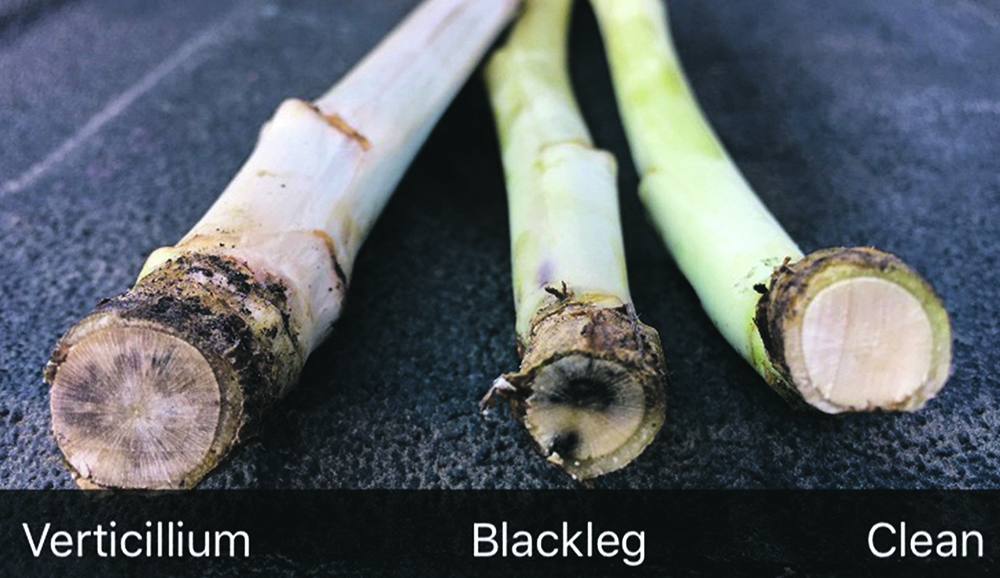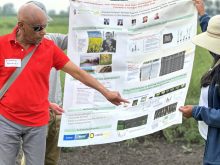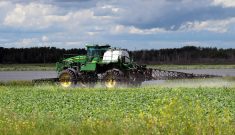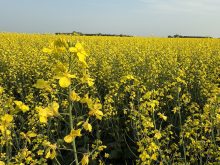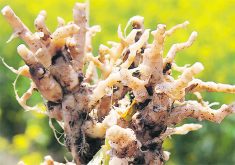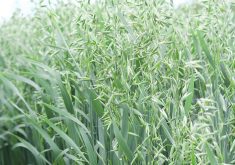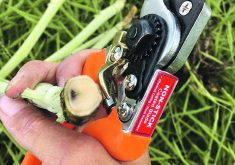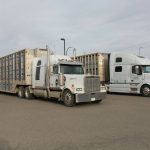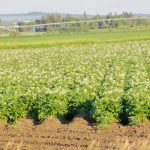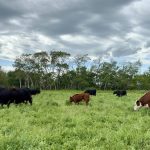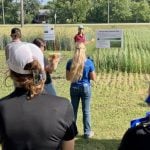Diseases that are present in fields today will determine how long the crop rotation should be, as well as which canola hybrid to use
Canola farmers need to tackle fungal diseases head on by walking through their fields and learning firsthand the extent of the problem, said an expert.
The idea behind scouting isn’t to protect this year’s crop from blackleg and verticillium stripe, said Courtney Boyachek, an agronomy specialist with the Canola Council of Canada.
“But it does give you a really good picture of what the future looks like for that field and for your operation for best management practices. If you know that you have blackleg or verticillium in your canola field this year, you know that’s something that you can keep in mind for three years down the road when you’re back into canola with your rotation, or whatever someone’s rotation might be.”
Scouting involves going on foot to look for canola plants with symptoms of either diseases, said Boyachek. “We want to be going into the field at about 60 percent seed colour change, so for a lot of producers, that timing is around right now,” she said.
“And what we’re going to do first is we’re going to walk into the field and we’re going to go in a W pattern, and we’re going to pull about 10 plants and cut. We’re going to take snips out there, we’re going to cut… a couple of centimetres off the root tissue, and we’re going to look at the root cortex.”
A key indicator for blackleg is a distinct black wedge, she said.
“It is kind of going to look like there’s a slice of pie in the root cortex, and if you’re seeing kind of a grayish-hue, starburst-y pattern, then that’s a telltale sign that we’re seeing verticillium out there.”
Other symptoms for blackleg include stem cankers or lesions, and stripping away the outer stem tissue or epidermis in a wallpaper-like fashion to search for verticillium will reveal tiny black microsclerotia, she said.
“So, that’s the spores that verticillium creates and it’s going to almost look like someone took a pepper shaker to your stems.”
Blackleg is mostly caused by a fungus called Leptosphaeria maculans, which can cause yield losses of as much as 50 percent. It was first detected in Saskatchewan in 1975 and it infects canola starting at the seedling stage, progressively reducing the plant’s uptake of nutrients and moisture over the course of the growing season.
Verticillium stripe is caused by a soil-borne fungus called Verticillium longisporum, which was first detected in canola in Manitoba in 2014. It is regarded as less damaging than blackleg because of its late onset in the growing season, but it could significantly affect yields if disease severity and infection are at high levels.
Scientists are trying to determine the exact impact of verticillium on canola, said Boyachek. The disease has only been known to be in Canada for nine years and it was often misdiagnosed until about five years ago, she said.
The picture is further complicated because many things ranging from insects and lack of moisture to weather events such as hail or wind can affect yields, she said.
“At this time, we’re hoping to do a little bit more research and figure that out in the coming years.”
Farmers across the Prairies have been affected by high temperatures and drought since this spring.
“Blackleg definitely likes more moist conditions, so it could help in a sense,” said Boyachek, based in Minnedosa, Man.

“At the same time, if you did get a little bit of moisture at the right time, blackleg can still be in your field, even though it’s a drier year. Verticillium likes hot, dry weather and we have been relatively hot and dry, so it’ll probably be out there this year.”
There has been a high prevalence of verticillium in Manitoba during the last couple years, she said.
“If you got a little bit of rain and then it got really hot and dry, the spores are there ready for germination, so we’re finding it everywhere,” she said.
“We’re seeing it in Manitoba, we’re seeing it in Saskatchewan, we’re (potentially) seeing it in Alberta, so it’s definitely out there.”
Walking in a W pattern encourages farmers to conduct sampling that is more random because they aren’t simply going to areas that look infected, said Boyachek.
“You’re going all over the field to make sure that you’re getting a really holistic look, and just pulling plants, doing those cross sections, looking at if the stock is clean looking. There’s always a little something going on there, and then if you’re not sure, calling your agronomist and sending plants off for samples if you’re still unsure.”
If blackleg is detected, it can help inform farmers’ decisions about what kind of canola hybrids they could plant that are resistant to the disease, along with determining fungicide rotations, said Boyachek. Unfortunately, no fungicide, seed treatment or genetic resistance has yet been found to counteract verticillium, she said.
A three-year rotation is often recommended to break up the cycle for the disease, along with some form of chemical control to eliminate potential hosts for the illness such as volunteer canola or wild mustard, she said. “It just gets people thinking about best management practices when it comes to the future.”


